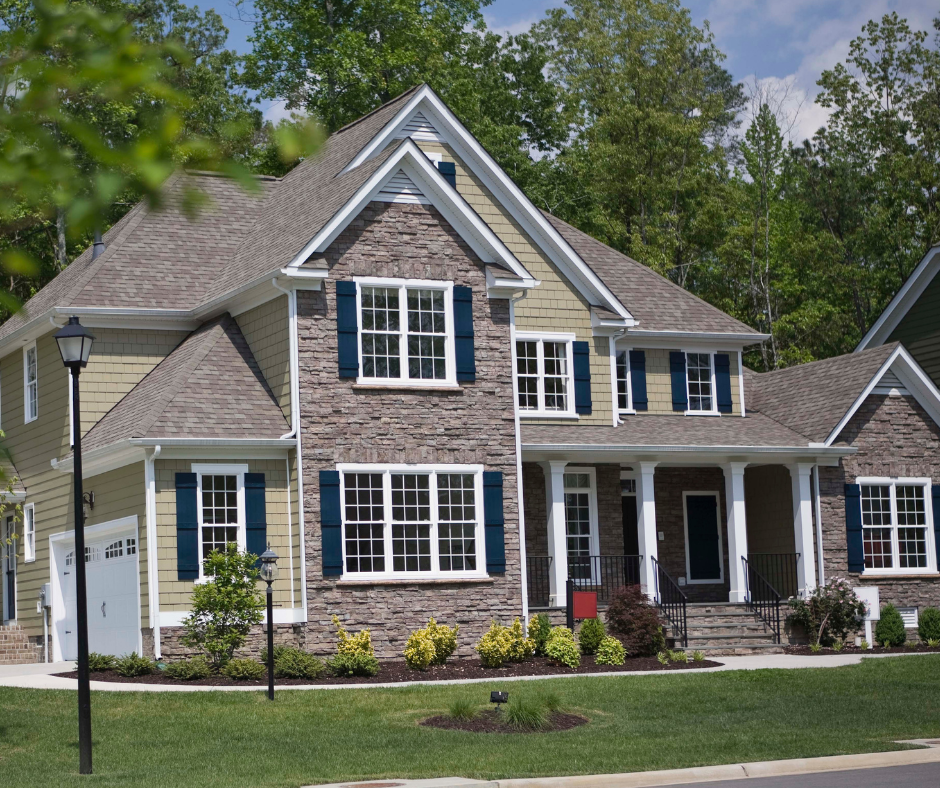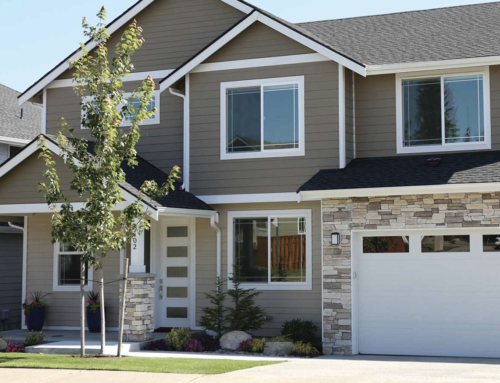 Choosing house colors for an exterior facade can be intimidating. It impacts your curb appeal, and it is a big investment that needs to compliment your home. Carefully considered steps can help you successfully navigate the job of choosing house colors. Thespruce.com gives tips on How to Choose Exterior Paint Colors Using a Visualizer.
Choosing house colors for an exterior facade can be intimidating. It impacts your curb appeal, and it is a big investment that needs to compliment your home. Carefully considered steps can help you successfully navigate the job of choosing house colors. Thespruce.com gives tips on How to Choose Exterior Paint Colors Using a Visualizer.
While exteriors are typically less susceptible to fleeting design trends, there has been a shift in popular house colors. Traditional bright whites are being traded for more confident, statement-making palettes on siding, trim, and front doors. Think vibrant blues and greens, creamy neutrals, cheerful pastels, and even monochromatic schemes of charcoal and black.
Consider your neighborhood’s style. Pick colors that complement neighboring facades, but do not replicate them. When selecting colors for your exterior, start by looking at which colors your neighbors have chosen and avoid using those same shades. Instead, choose a color that complements it.
Your home already has hues that you should include as part of your color scheme like brick or stone on the foundation, window trim, and the roof. Those should serve as the base to build on. A home’s size also influences how colors look. Residences that are large and painted a dark color may look ominous and foreboding in the landscape, while too light schemes on a small house may result in a home that does not feel grounded.
Landscape plays a part, too. A more naturalistic landscape may inspire house paint colors that are recessive—seafoam green, pastels, soft neutrals. A formal landscape setup—rows and rows of boxwood shrubs lining a walkway—may dictate stronger colors and accents with a definite design rigor.
BHG.com has The Top 10 Exterior Paint Color Trends to Try on Your Home in 2022.
 Here are some other suggestions:
Here are some other suggestions:
Warm, Earthy Neutrals
There has been a warming trend throughout interior color palettes, and now earthy browns and other warm neutrals are making their way outside. Organic shades that mimic the color of clay, earth, or stone allow exteriors to blend seamlessly into the surrounding environment rather than stand out
Dusty Charcoal
Rich shades of charcoal are rising in popularity as well. Charcoal grey works best with contrasting colors, such as white and bright grey. It can also be a background for intense colors, such as blue, yellow, or green.
Warm Whites and Creams
Rather than bright white, more subdued options with restful energy are increasing in popularity. Pure whites are quietly shifting to more nuanced whites that sit more softly on a weatherboarded exterior.
Warm colors pull orange, yellow, or red undertones, while cool colors pull green, blue, or purple undertones. Stark whites are often considered a best exterior white paint because the cool hue relates to natural colors well. Blue sky, green grass, and green landscaping all work well with cool hue paints.
Classic Navy
This traditional shade is rounding the bend toward modern. There are plenty of complementary color options to choose from when it comes to navy. To create a contrast, look at colors such as browns, reds, and oranges. Orange works particularly well with navy as the bright tones of the orange make the dark blue appear even deeper.
Vibrant Greens
Rich green shades are a nod to nature and its rejuvenating qualities. Darker exterior shades are very flattering to greenery. Light shades of brown such as tan and sand keep the exterior looking bright yet mellow. Deeper shades than light green, like burnt umber or chestnut, will make your trim pop, and have a woody look. Grey and cream are also a nice, neutral, and natural shades that pair well with green as accent colors.
The professionals at Dynasty Restoration can help you find the perfect color combination for your home’s exterior, including siding and roof color options. For a Free Estimate, Contact us Today!




